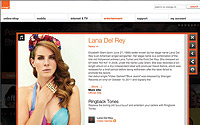 Perhaps the best way to talk about disruptive start-up NewsCred is to describe what it’s not. It’s not trying to compete with the Associated Press, but it is a
newswire, albeit for the digital arena. It’s not encouraging a publication to shed staff journalists, but it does give freelancers incentive to not be tied down to a single news organization.
It’s also not trying to condense or cheapen the quality of journalism.
Perhaps the best way to talk about disruptive start-up NewsCred is to describe what it’s not. It’s not trying to compete with the Associated Press, but it is a
newswire, albeit for the digital arena. It’s not encouraging a publication to shed staff journalists, but it does give freelancers incentive to not be tied down to a single news organization.
It’s also not trying to condense or cheapen the quality of journalism.
NewsCred is simply trying to marry good journalism to its appropriate outlet. And as most people know, the key
to any successful marriage comes from mutually beneficial exchanges, which is why NewsCred aims to simultaneously please journalists, publishers and brands.
Simply put, NewsCred is a
content curator that mines the Internet for relevant and — this is the kicker — credible content. “NewsCred originated as a consumer-facing news portal,” says CEO Shafqat
Islam, who founded the company in 2008. “But we quickly shifted the business around because we saw there was a huge opportunity to help connect brands and publishers with the world’s best
content.”
But don’t call them a newswire. “We’re trying to reimagine and reinvent that model,” he notes. “That said, the ap creates great journalism, so
I’m not here to say they produce something of poor quality. We actually work with them. We hope to give publishers and brands an alternative. That’s the important part. Brands and their
readers deserve better, and they should get an interesting diversity of content. A raw ap feed doesn’t serve a publisher’s or brand’s interest and doesn’t serve the end
reader.”
The technology is impressive, too. NewsCred is platform agnostic, meaning it is compatible with all Web sites and devices — online, mobile Web, tablets, ios and
Android. Its api filters articles by myriad criteria: location, subject, date, languages and sources. “We are a technology company at heart, and a lot of the innovation at NewsCred is around how
we curate and organize the content we license,” Islam says.
Algorithms do part of that curation. “What we do is figure out what every piece of content is about. I like to call
it adding a layer of context or intelligence over that raw news content. We can extract names, categories and say, ‘Hey, this is an article about moms, diabetes or cooking.’ We can do a
lot of that algorithmically. We do have a human curation level as well, that we apply for clients who are interested in that.”
Aside from curating content, NewsCred also syndicates
it. To this extent, it helps publishers connect with brands to provide content that blends technology and human elements. The technology helps with this, based on semantic analysis and
contextualization. The end step for syndication is the editorial team who evaluates the quality and relevance of the news for clients.
Venture capitalists have bought into Islam’s
model, as well, and NewsCred recently raised $4 million.
Clients include publishers Fanhattan, Yahoo, Forbes, the New York Daily News, StockTwits and Business
Insider, as well as brands like Orange Telecom and Lenovo.
For Orange Telecom, NewsCred designed a visual mosaic that lets users seamlessly interact with content through the Web site,
mobile and tablets. The content is fully licensed to Orange, which disseminates it at a fraction of the cost of having an in-house editorial team. (Freelance journalists whose work appears on Orange
Telecom’s site are compensated by NewsCred.)
For now, NewsCred is content with being a quiet contender in the content curation and syndication game. But competitors beware:
This small tech shop is poised to be a leader in next-generation quality content.